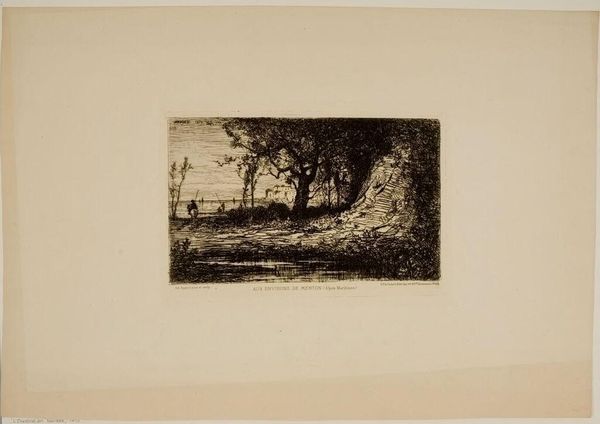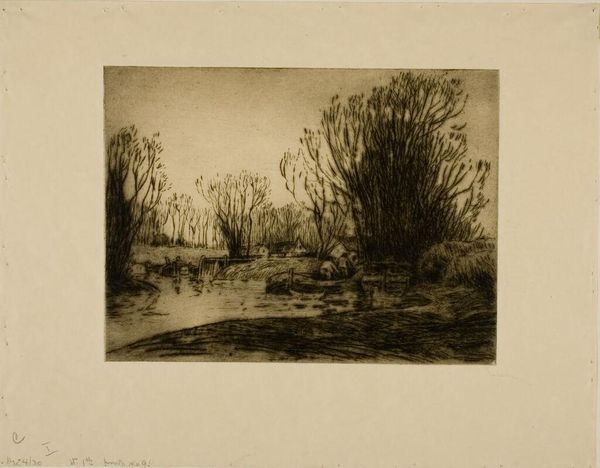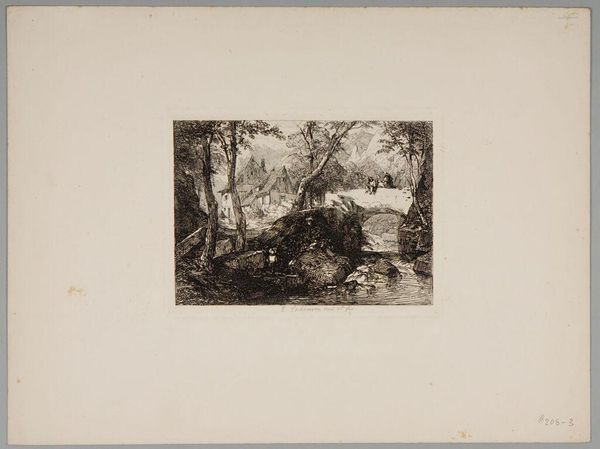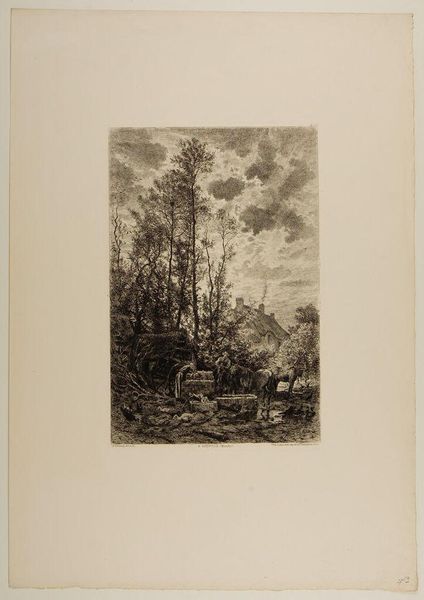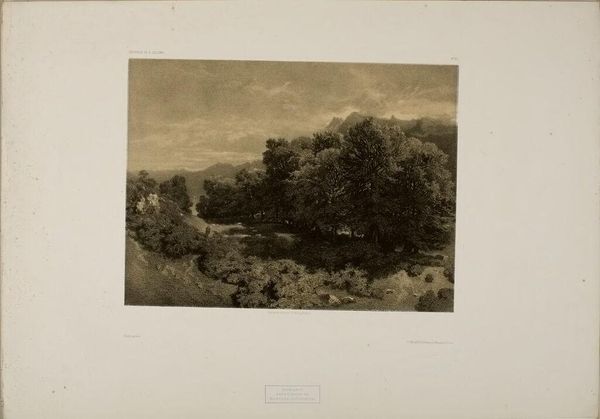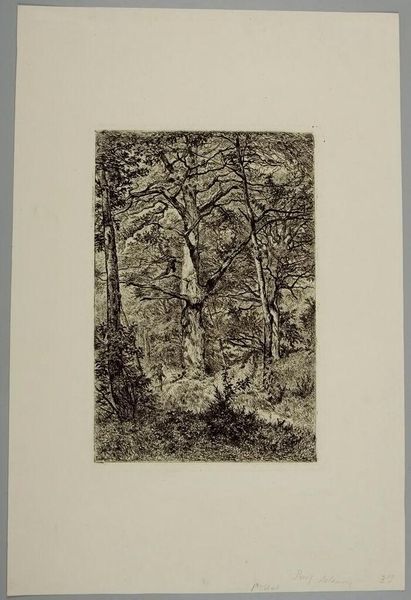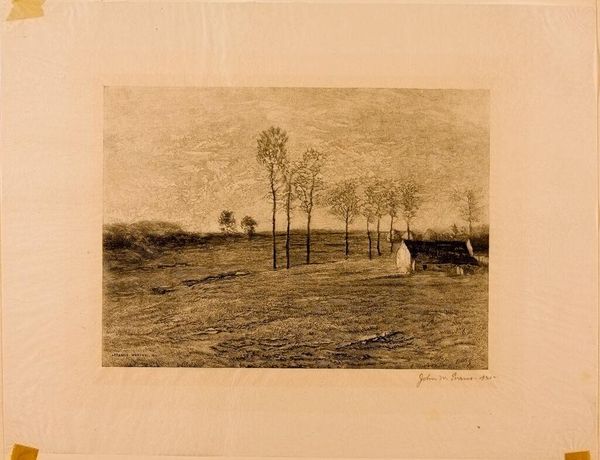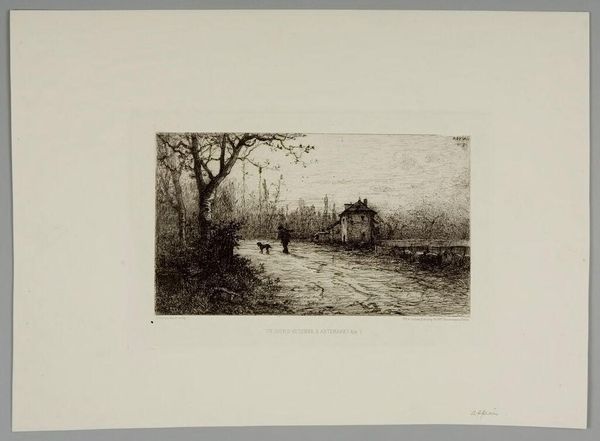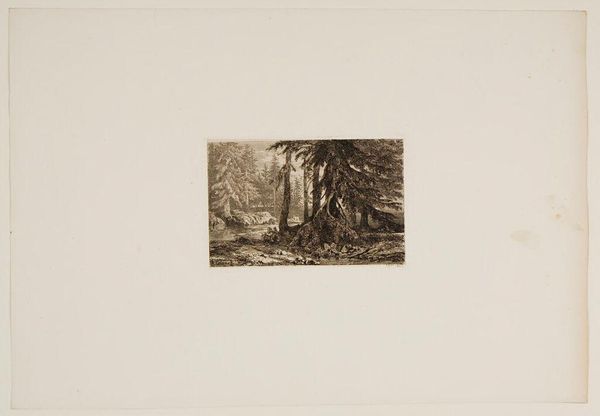
Copyright: CC0 1.0
Editor: Here we have Henry Wolf's "Landscape," etched presumably around the late 19th or early 20th century. The darkness is so dense, it almost feels like a protest against idyllic landscape traditions. What kind of statement do you think Wolf might have been making? Curator: It's interesting to frame it as protest, considering Wolf’s context. Were landscapes solely about the picturesque then, or could they also reflect a growing awareness of environmental change, even anxieties about industrialization's impact on nature? Perhaps this density mirrors social issues too. Editor: So you're saying it could be about more than just the beauty of nature? Curator: Precisely. How might his personal politics, race, or gender influence this depiction? Let's consider what anxieties or realities Wolf may have been channeling. Editor: It gives me a lot to consider about how landscapes can carry social meaning. Curator: Indeed. Art becomes a powerful tool when we consider the conversations it invites about identity, environment, and societal shifts.
Comments
No comments
Be the first to comment and join the conversation on the ultimate creative platform.
